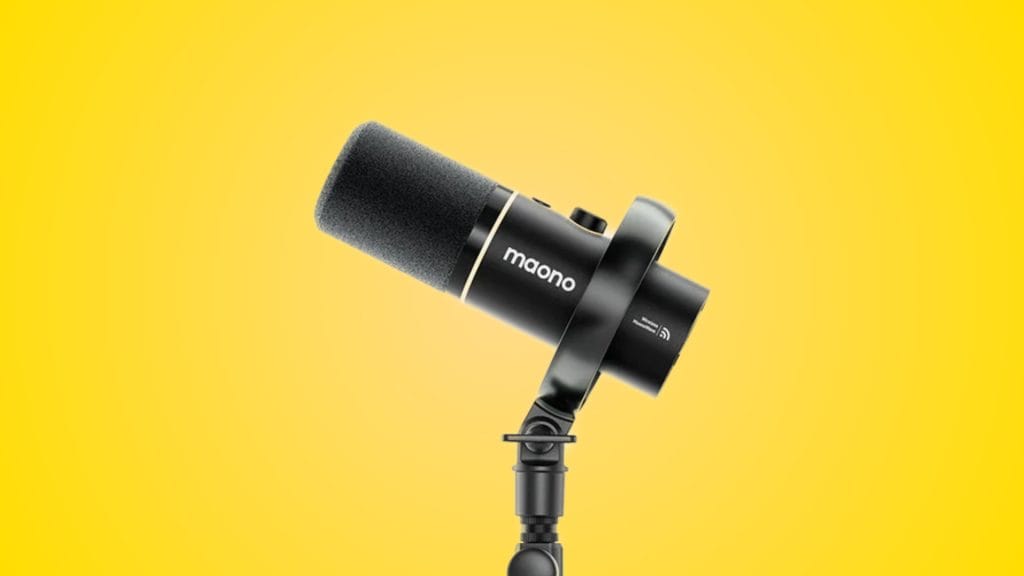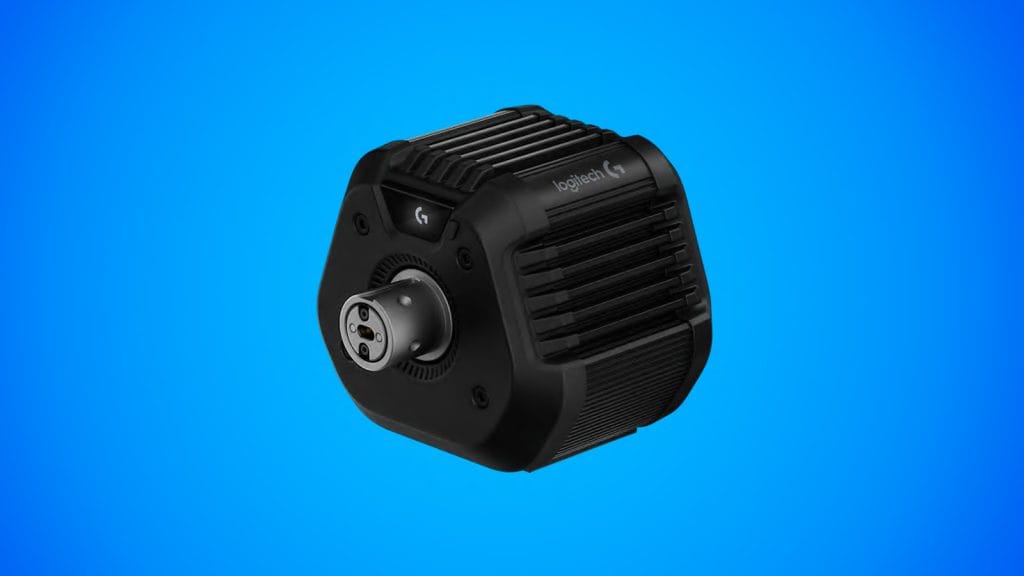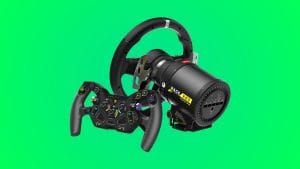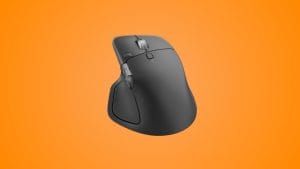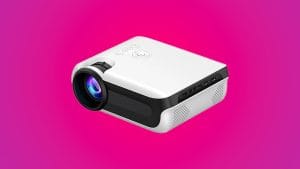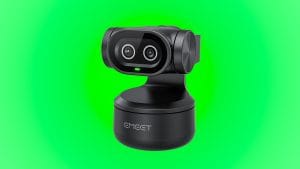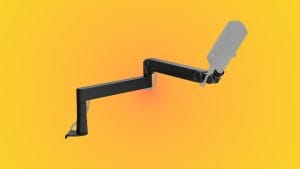Logitech RS50 Base and RS Pedals
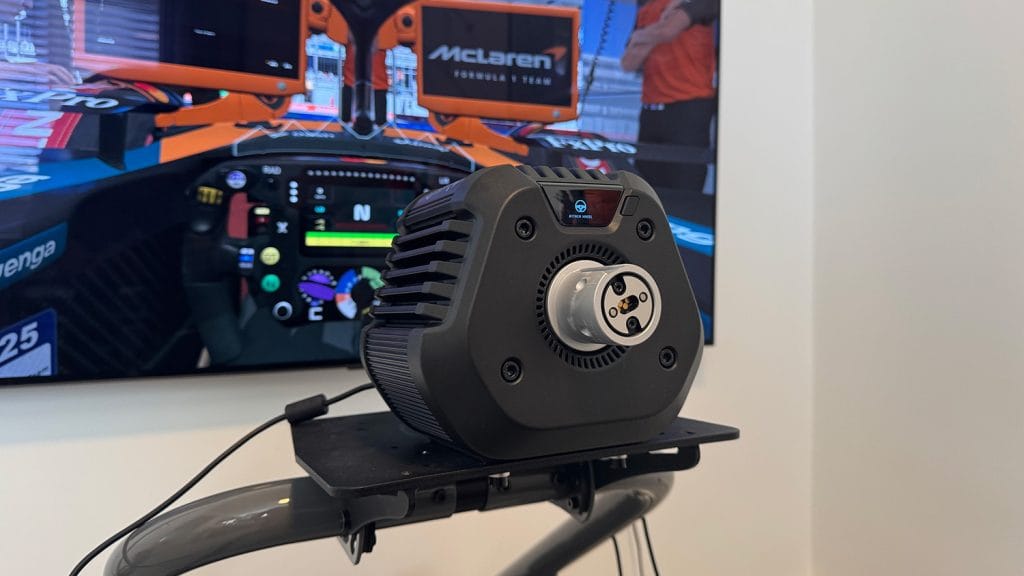
design
Logitech went large and bespoke when it released the original G Pro wheelbase. Not only was it a huge lump, it defied the general styling of most others with a rounded-off body that looked closer to a road car cluster than a sim racing wheelbase. The Logitech RS50 has clearly been taking notes from the competition, adopting the now-standard compact, finned cube shape that basically every sim racing brand has converged on. It’s Formula 1 logic really – eventually everyone arrives at the same aerodynamic solution because, well, it works.
That said, Logitech hasn’t completely surrendered its personality. The RS50 features some charmingly sloped sides and rounded corners that give it a friendlier, less industrial vibe than rivals. Where something like the MOZA R12 looks like it means serious business, the Logitech RS50 feels like it might actually crack a smile. It’s a subtle difference, but I appreciate the effort to stand out without resorting to aggressive gamer aesthetics.
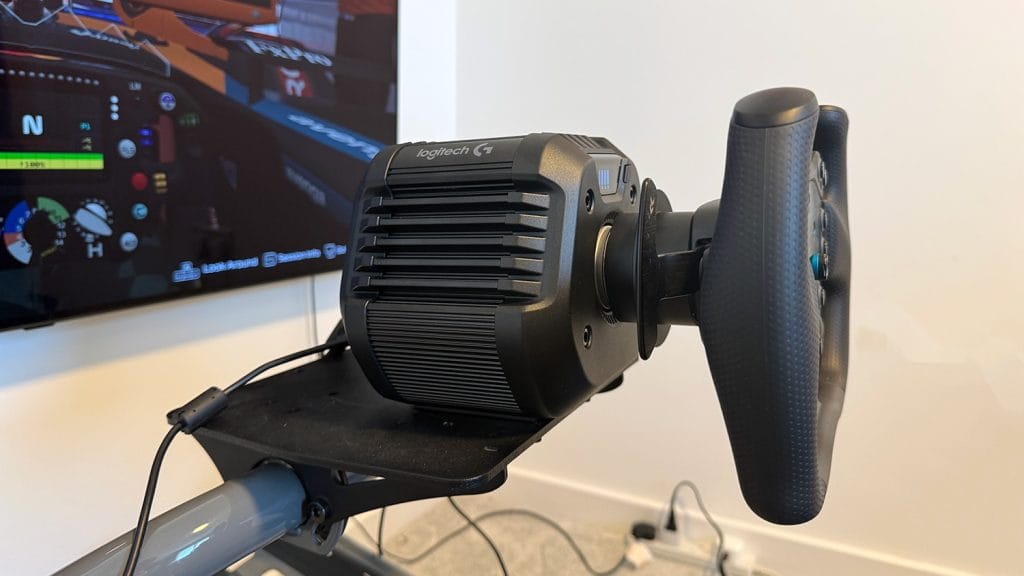
Build quality is excellent across the board. The wheelbase is predominantly metal and feels solid and sturdy as a result, it’s surprisingly heavy too for its size. Unlike some competitors it’s not entirely metal though – each end is covered by a plastic cap, though these don’t feel cheap and aren’t even obviously plastic from a distance. There’s a small but useful OLED display on the front face – carried over from the G Pro – and round the back you’ll find a three-port USB hub for expanding your setup with shifters, handbrakes, and other peripherals. There’s good compatibility with other gear on offer here, though some may need Logitech’s Racing Adapter to work.
Onto the RS Pedals, which also mark a significant design shift for Logitech. Gone is the all-in-one tray design from the G Pro Pedals (which I actually quite liked). Instead, Logitech has joined the rest of the industry with a more modular approach – individual pedals and a separate heel plate that you assemble yourself. This means more faffing about with hex screws during setup and in my opinion a slightly less reassuring build quality overall, but once everything’s tightened down properly, the pedals do feel solid. I certainly had no concerns about them falling apart mid-lap or anything dramatic like that.
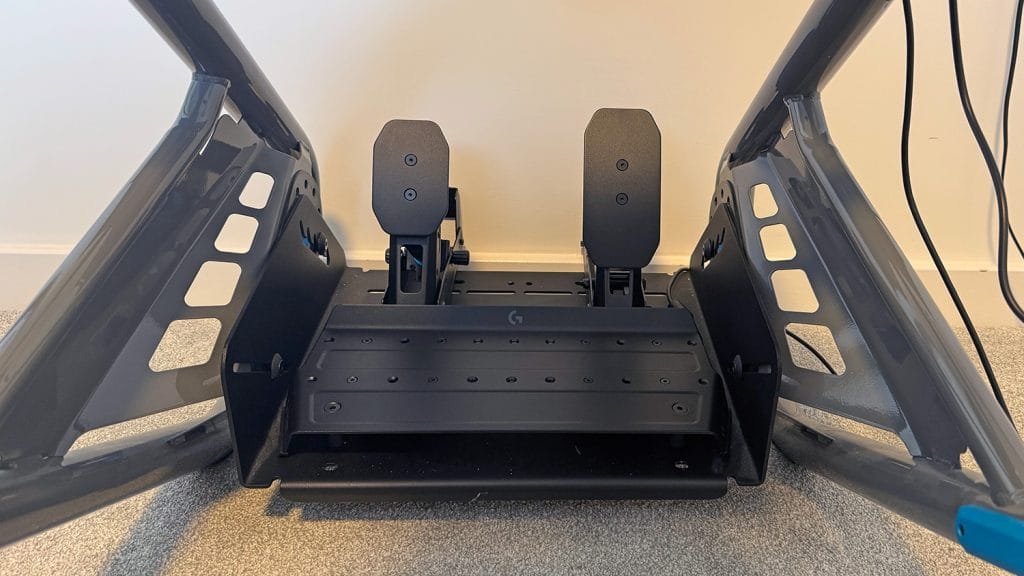
If you’re running something like the Playseat Challenge X, the RS Pedals will bolt straight to the mounting tray with predrilled holes in all the right places. If you’re not, Logitech includes both carpet grips and wall braces, which is a nice touch and shows they’ve thought about various setup scenarios. You get a brake and accelerator pedal as standard, with the option to add a clutch pedal separately if your style of racing demands it.
This time the construction is 100% metal, which is reassuring, though the design does feel noticeably scaled back compared to the G Pro offerings. Everything’s just a touch smaller, a touch thinner, and a touch less substantial – think of it as the difference between F1 and F2 cars. It’s understandable given these come in at less than half the price of the premium pedals, and they stack up well against similarly priced options like the Revosim RS Pure. But it’s worth knowing they’re definitely positioned as the more affordable sibling.
performance
Right, there’s some admin to do here first because the Logitech RS50 ecosystem and bundle options need some breaking down. Stick with me. The wheelbase is available either standalone as the RS50 Base ($349-449/£249-339 depending on your console choice), or as the RS50 System bundle which includes a desk clamp, RS Wheel Hub, and RS Round Wheel for $699/£599. Here’s the thing though – that bundle is only a marginal discount over buying everything separately. Basically, you’re getting a free desk clamp. Not exactly the most generous stuff, Logitech. It’s also worth noting you’ll need to buy the clamp separately if you opt for the RS50 Base on its own.
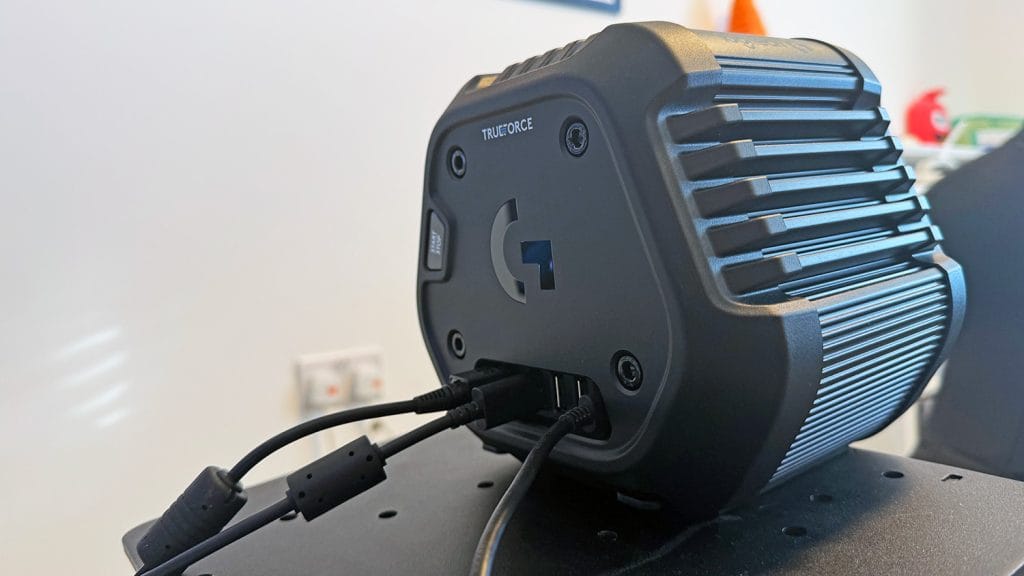
What’s conspicuously absent from any bundle? The RS Pedals, which you’ll need to purchase separately for $159/£119. There’s also no bundle option that includes the more formula-style RS Track Wheel, so if that’s your preference, you’re cobbling things together manually anyway. Maybe it’s just me, but if I was trying to build an ecosystem and get people to buy in, I’d be offering incentives for getting all the gear at once.
Compatibility and add-ons is where things get interesting. There are PC and PlayStation/PC versions of the base unit, though technically no Xbox variant. Don’t panic if you’re Team Green, Xbox compatibility instead comes from the Xbox edition of the RS Wheel Hub so there is an Xbox-specific RS50 System. Other Logitech racing gear should integrate nicely via the USB hub on the back of the wheelbase or through the Racing Adapter, meaning you can carry forward things like G920 pedals or add the RS Shifter and Handbrake down the line. If you already own the original G Pro wheel, it’ll slot straight onto the RS50’s quick release mechanism without complaint. I switched between the new RS Wheel Hub and my old G Pro wheel multiple times across different games and never had an issue though I did notice a few scrapes on the RS50’s connector.
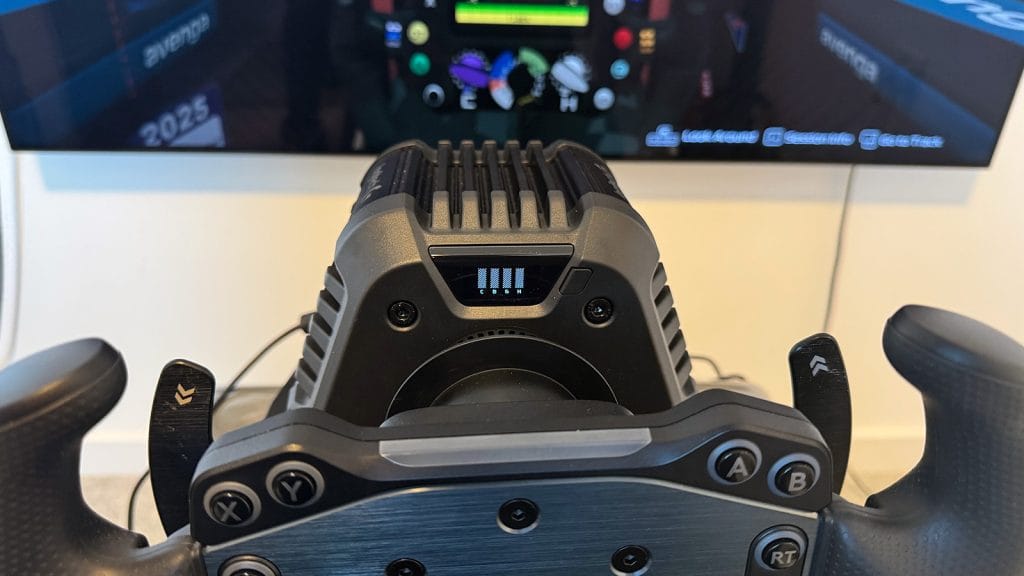
Now then, let’s actually talk about driving the thing.
The Logitech RS50 is, and I don’t say this lightly, probably my favorite wheelbase I’ve tested. That’s a big claim given how many laps I’ve logged with the vastly more expensive G Pro Racing Wheel, along with options from MOZA, Nacon, Thrustmaster, and Turtle Beach. The 8Nm of direct drive torque hits a lovely sweet spot – it’ll wrestle with you convincingly without threatening to dislocate your wrists. If you’re coming from a gear-driven wheel like the G923, this jump is going to feel transformative. Plus, unless you’re a seasoned sim-racing pro, don’t get caught up chasing maximum torque numbers; 8Nm is more than enough for the vast majority of players.
What really elevates the experience is TRUEFORCE, Logitech’s proprietary force feedback layer that adds an extra dimension of detail and realism in supported titles. Now, I’ll admit before I first tried it I was slightly skeptical about whether this was just marketing fluff, but in F1 25 it genuinely made a noticeable difference. Different track surfaces feel distinct, individual kerb types deliver unique sensations through the wheel, and there’s a tangible improvement in immersion. Don’t get me wrong, you’re not missing out on the essential direct drive racing experience if you have a wheelbase without TRUEFORCE, but once you’ve experienced it, you’ll likely want to keep it.
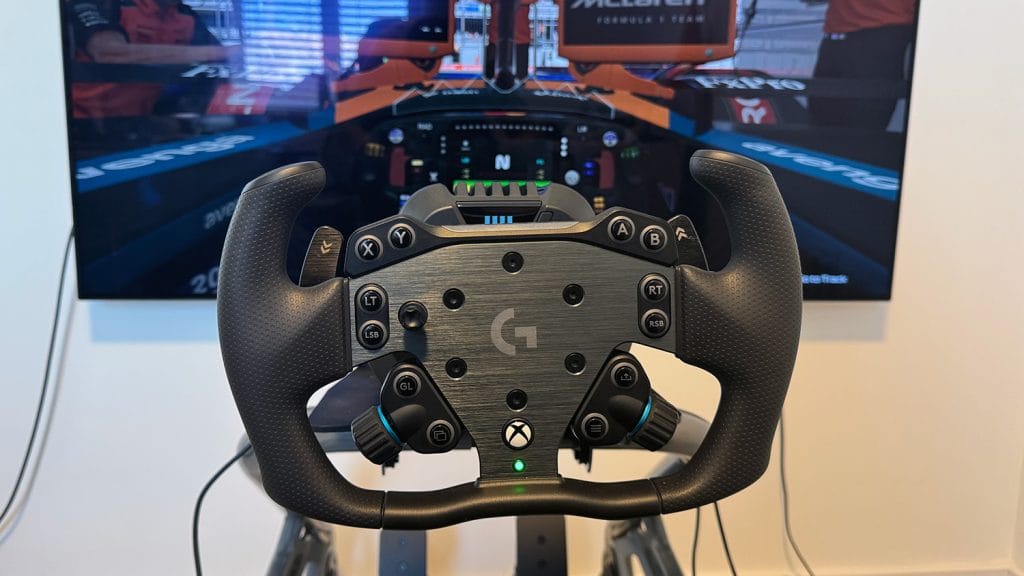
Power delivery from the RS50 was consistently smooth across multiple games and several hours of testing. I didn’t notice any performance degradation or strange graininess creeping into the force feedback, which can be an issue with some lower-price direct drive systems. One curious quirk though – in my setup at least, it felt like the wheelbase was sending force feedback down through its base rather than purely forwards through the wheel. Mounted on my Playseat Trophy Logitech G Edition, there was noticeably more vibration traveling through the frame and up into the seat from around and below me than I’ve experienced with other wheelbases.
This made things marginally louder as the vibrations rattled through the frame far more, but honestly? I didn’t mind the change in sensation overall. The energy wasn’t just shooting straight up my arms – it was coming from underneath me too, which somehow felt more engaging and like I was in the car and not just holding it. Whether this is specific to my mounting configuration or a general characteristic of the RS50, I can’t say definitively, but I’m not complaining about the result.
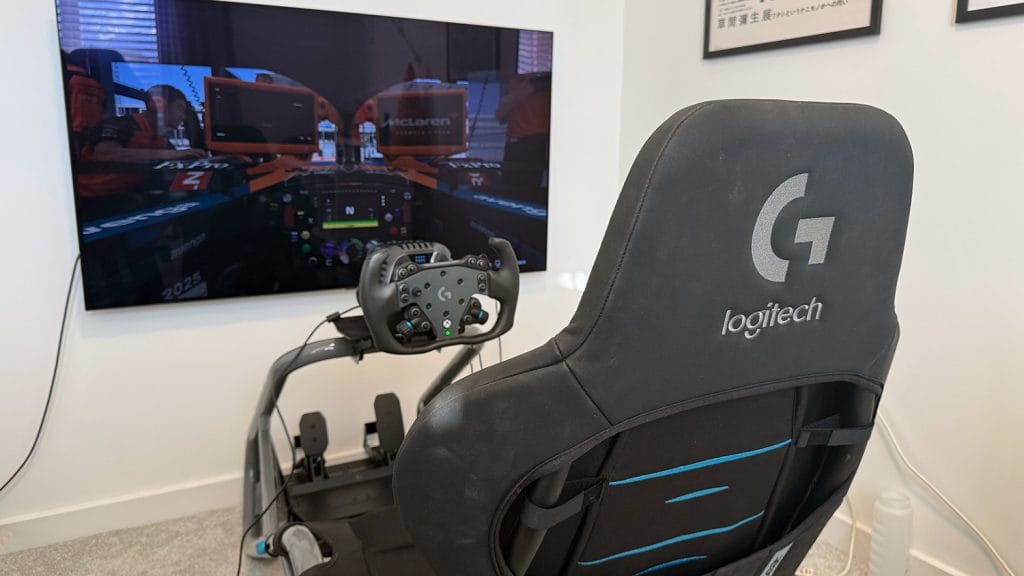
I was particularly impressed with the mounting experience itself, by the way. The Logitech RS50 uses t-nuts for bolting on to a racing seat, like the Revosim RS Pure, but Logitech includes a clever plastic guide rail that keeps them perfectly aligned with the wheelbase. This completely eliminated the frustrations I had with the RS Pure and made installation quick and painless. It’s a small detail, but it’s exactly the sort of thing that makes me appreciate a well-thought-out product.
Down at floor level, the RS Pedals do their job admirably without much fuss or fanfare. The throttle uses a contactless hall effect sensor for precision and longevity, while the brake features a 75kg load cell. For the uninitiated, a load cell measures how hard you press the pedal rather than how far it travels, which makes advanced techniques like trailbraking significantly easier to master. It takes some adjustment if you’re used to traditional pedals, but it’s the right approach for this price point as it represents a genuine step up in realism and performance.
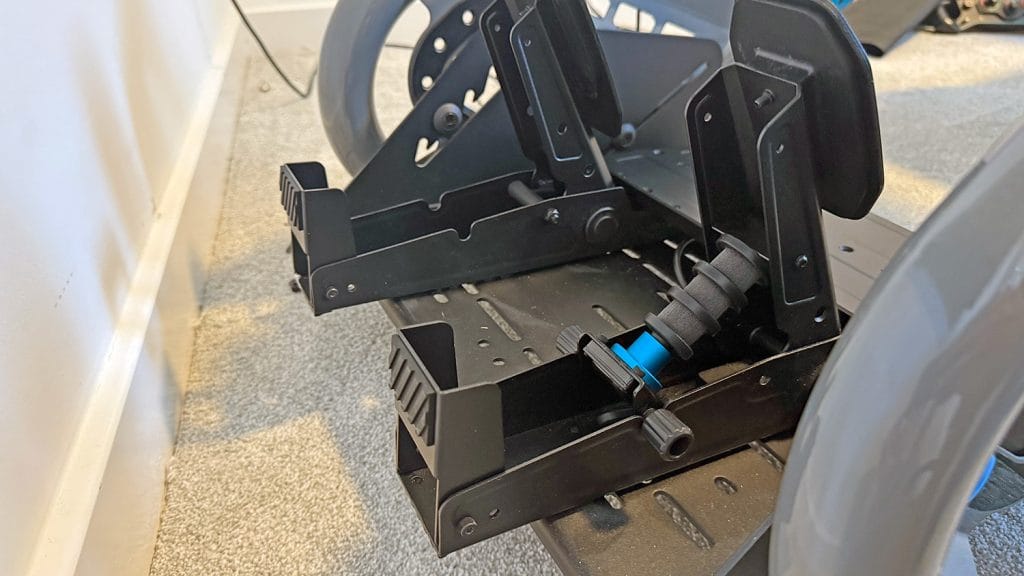
Logitech includes several different elastomer inserts to adjust brake resistance, though I found the default settings perfectly adequate. The 75kg load cell requires a proper shove to max out, but even with relatively short travel there’s plenty of room for delicate inputs and finessing your braking technique. Much like the 8Nm in the wheelbase being sufficient for my abilities, the pedal setup delivered everything I needed without leaving me wanting more or feeling short-changed.
The software experience is where the RS50 stumbles slightly, though how much this matters depends on your sim racing ambitions. It’s clear Logitech designed this as a plug-and-play solution, and as a result, the tuning options available in the G Hub app are noticeably more limited than what you’d get from a specialist brand like MOZA. What’s there will satisfy most casual racers – I didn’t personally feel like I was missing critical adjustments – but I can imagine more experienced sim racers feeling somewhat restricted.
Game compatibility also threw up a few minor hiccups initially, but these were quickly resolved by switching to G Pro compatibility mode using the onboard controls and display. This essentially tricks games into thinking you’re using the more established G Pro wheel, which means button mappings are automatically configured. In an ideal world things would have already been resolved and buttons maps as the RS50, but it worked flawlessly every time I needed it and I didn’t notice any performance compromises when running in this mode. The Revosim RS Pure, by comparison, often left me manually mapping buttons, so I’ll take Logitech’s approach any day.
summed up
It may have taken its time to get there, but Logitech has done a wonderful job with the RS50. It perfectly fills a gap in its range and has real potential to dominate this price point like the G923 dominated the lower one for so long. If you’re looking to step up from something like that classic G923 or any other non-direct-drive wheel like the Thrustmaster T98, this is exactly the upgrade you’ve been waiting for. The 8Nm of torque is more than adequate, power delivery is smooth and reliable, and TRUEFORCE adds a genuinely noticeable immersion boost in supported titles.
Build quality is excellent, particularly on the wheelbase itself, and there’s a growing ecosystem of add-ons including those respectable load cell RS Pedals. Compatibility with PC, PlayStation, and Xbox (depending on which version you buy) means most racers will be covered. Make no mistake, at $699/£599 plus another $159/£119 for pedals, this isn’t pocket change, but it represents excellent value for what you’re getting.

